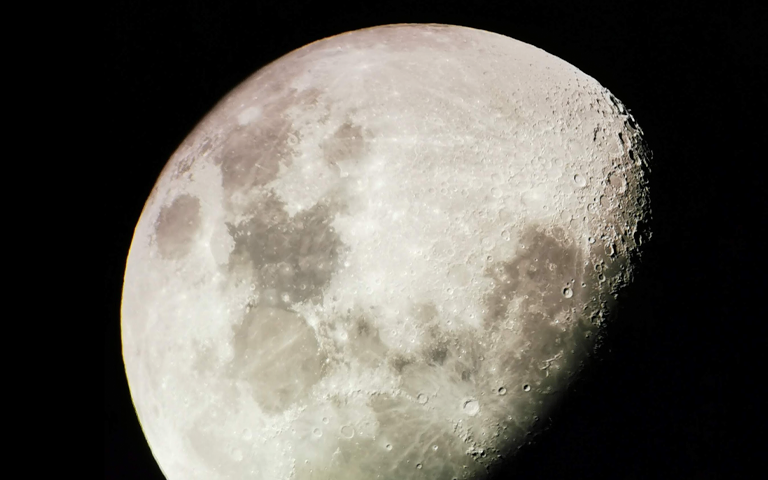UCL plays leading role in lunar landing site selection
Academics from UCL’s Department of Space and Climate Physics at the Mullard Space Science Laboratory have recently helped NASA assess lunar landing sites for the ambitious Artemis program.

6 October 2021
In May 2019, the National Aeronautics and Space Administration (NASA) announced the launch of Artemis. This new US-government funded and crewed spaceflight program has the goal of landing ‘the first woman and the next man’ on the south pole of the Moon by 2024. A number of international partners work with NASA on the programme, including the European Space Agency (ESA).
Artemis is the next step in the long-term goal of establishing a sustainable presence on the Moon, laying the foundation for a lunar economy and eventually providing a launch pad for sending humans to Mars by the 2030s.
A vitally important part of the planning and preparation for the Artemis program is to locate, analyse and select the most appropriate lunar landing sites so that NASA’s craft can land safely.
Picking the right place to put people on the Moon
NASA’s Jet Propulsion Laboratory (JPL) was founded in the 1930s and is managed by the nearby and world-renowned California Institute of Technology (Caltech). Its primary function is the construction and operation of planetary robotic spacecraft, although it also conducts Earth-orbit and astronomy missions. Having developed America's first Earth-orbiting science satellite, JPL has also developed the first successful interplanetary spacecraft and has sent robotic missions to study all the planets in the solar system as well as asteroids, comets and our Moon.
As part of the Artemis program, the JPL team was tasked with assessing the potential of current 3D imaging solutions to help identify, analyse and select various lunar landing sites that could lead to the safe exploration of the Moon by NASA and ESA astronauts.
At that point a project coordinator from NASA’s Moon Trek online portal turned for help to Professor Jan-Peter Muller, Head of Imaging of the Mullard Space Science Laboratory of UCL’s Department of Space and Climate Physics. An expert in image understanding and remote sensing, for over four decades Jan-Peter has been an active leader in the development of practical, operational solutions to environmental and planetary mapping problems using automated imaging and image interpretation.
3D modelling of the Moon’s surface
JPL wanted Jan-Peter and his team to use the output of their very high-resolution NASA orbital 0.5 to 1 metre stereo cameras to create a 3D model and associated image for the Moon Trek portal, to aid the Artemis project and future lunar landings.
Moon Trek is a web-based portal integrating a suite of interactive and easy-to-use tools which incorporate observations from past and current lunar missions, creating a comprehensive lunar research application. It was developed to meet the needs of a wide range of interested parties, from lunar mission planners and space scientists to teachers and learners in the education sector.
Part of Jan-Peter’s brief was to study Aristarchus, a prominent lunar impact crater lying in the north-west section of the Moon’s near side. One of the brightest of the large formations on the lunar surface, Aristarchus spans almost 25 miles (40 kilometres) and at over two miles (nearly four kilometres) in depth, it’s deeper than the Grand Canyon. It was originally selected for the Apollo 18 landing site.
Mosaiced images deliver the perfect big picture
Jan-Peter and PhD student, Alfiah Putri, selected and processed a large number of stereo images from NASA, from which a subset was chosen. A unique stereo processing system was then applied to these images to extract a 3D model at one metre as well as a co-registered 50cm image mosaic.
At that point, they compared their results with lower resolution data from an orbiting light detection and ranging (LIDAR) satellite, which is used for remote sensing and the examination of a planet’s surface, before analysing the data and producing a report of their findings.
The result was 128 GBs of data products and an extensive report detailing each individual image as well as the final mosaiced product and their verification. The final mosaiced products are currently being loaded into Moon Trek. Besides being made available on that NASA resource, the datasets are all being made publicly available through the new ESA Guest Storage Facility at the European Space Agency Centre’s (ESAC) Planetary Science Archive (PSA). They will also be linked via a peer review paper to a digital object identifier (DOI) that will enable these important resources to be easily found and utilised by lunar scientists around the world.
Delivering a unique capability and value
Jan-Peter and his colleagues at MSSL were not chosen for this specialist project purely because of their technical expertise and experience alone, but also for their ability to deliver the high quality results NASA and Moon Trek required in a timely and cost effective manner.
The client was pleased with the monthly reporting, the quality of the interim and final products and the MSSL team’s final report and Product User Guide detailing the product format.
In addition, they were also pleased with the delivery platform chosen - Google Drive - as no other system could cope with the data volume involved. This cloud-based storage solution empowers the widest possible range of users to securely save and share files from just about anywhere they have access to a laptop, tablet or smartphone and an Internet connection. Google Drive is also a well-proven collaboration tool, ideal for a project of this nature.
Ultimately, the work of Jan-Peter and Alfiah at UCL’s Mullard Space Science Laboratory has provided Moon Trek, JPL and NASA with a better understanding of potential lunar landing sites to help enhance the future success of the Artemis program.
Meaghan Samuels, Senior Contracts Manager for UCL Consultants (UCLC), part of UCL Innovation & Enterprise, who helped to arrange and manage the contract between the university and NASA’s Jet Propulsion Laboratory commented, ‘UCLC was delighted to facilitate Professor Muller‘s work with JPL. His team’s analysis and detailed imagery of the moon’s craters will assist in identifying possible landing spots for human lunar exploration. The international collaboration involved in space research is a wonderful reminder of what we can do when we come together. I can’t wait to see the results!’
Acknowledgement
Research reported in this case study was funded by the National Aeronautics and Space Administration (NASA) Jet Propulsion Laboratory (JPL) under subcontract number 1639009.
Image
Paul Burgoine
 Close
Close



